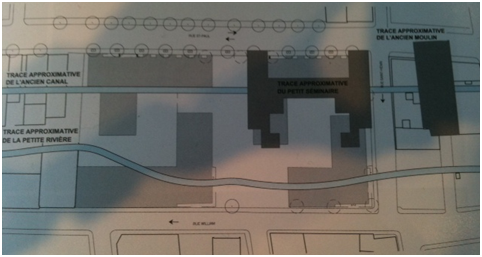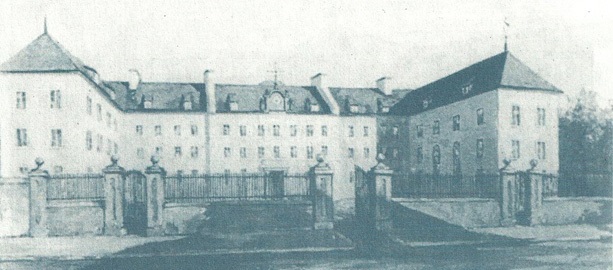By Philippe Vincent Strolling around in the streets of the Old Port of Montreal, location of the upcoming 21e Arrondissement, the brand new condo project of the Groupe Prevel, one can easily appreciate its historical and patrimonial richness. In the Old Port, under our feet, below the pavements and behind the old fortifications still standing today, there is a long and often forgotten history waiting to be discovered. Here are some pieces and bits of particular interest for us: overview of a site anchored in History. When Jeanne Mance and Paul Chomedey Lord of Maisonneuve arrived on the island of Montreal, nearly 370 years ago, the site where the buildings of the 21e Arrondissement project will be constructed was traversed by the meanders of the St. Pierre River. Like the mount Royal, this river constituted an important part of Montreal’s landscape. It took its source in the St. Pierre lake and flowed in the south-west portion of the island, where it formed an inland lake called the Lac à la Loutre (Otter Lake) at the feet of the St. Jacques cliff. This stream was channelized and turned into a sanitary sewer between 1832 and 1838, in one of the most ambitious civil engineering projects of this period. At the mouth of the St. Pierre River, in the vicinity of the Pointe à Callière Museum, archaeological digs conducted in 1989 revealed a condensate of Montreal’s history. At this site, located below the actual Place du Palais (Palace Square), the bottom layers of the dig (circa 1350 A.D.) contain evidences showing that the site was frequently used by indigenous people. Then, among other things, archeologist found the traces of the first catholic cemetery of the Ville-Marie village, and the foundations of the buildings that formed the first center of the City. Here is a picture I took of one of the plans of the 21e Arrondissement project (buildings are in light grey). On it, you can see where the bed of the River was located, and that there was a canal that brought water to a mill placed next to the Petit Séminaire (Little Seminary). Thus, a portion of the site of the upcoming 21e Arrondissement was occupied by a second element of historical importance, the Petit Séminaire. This school, erected in 1806, is the second building constructed by the Sulpicians Priests, a religious society in the name of which Lord Maisonneuve left France to found Ville-Marie and that managed the city until the conquest of the French colony. These priests were very active in education and evangelisation in the French regime and the Petit Séminaire is known for some students that became notorious historical figures, such as Louis-Hippolyte Lafontaine, Georges-Étienne Cartier and Louis Riel.
The Petit Séminaire was demolished between 1974 and 1975
Enriched by the passage of time, the Old-Port of Montreal is a true gold mine for people looking to learn more about the history of Québec and the colonization of the American continent. We invite you to visit, as a starting point of your journey into the past, the Pointe à Callière Museum and the Montreal’s History Center, both located in the Old Port. Finally, we look forward to exploring with you other parts of Montreal’s history in upcoming posts. Enjoy! Philippe Image on top of the post: Le Devoir. Photo of the Petit Séminaire: Collège de Montréal.





